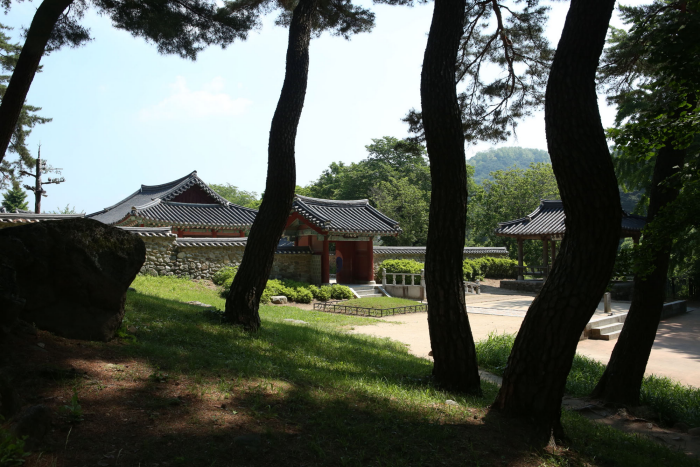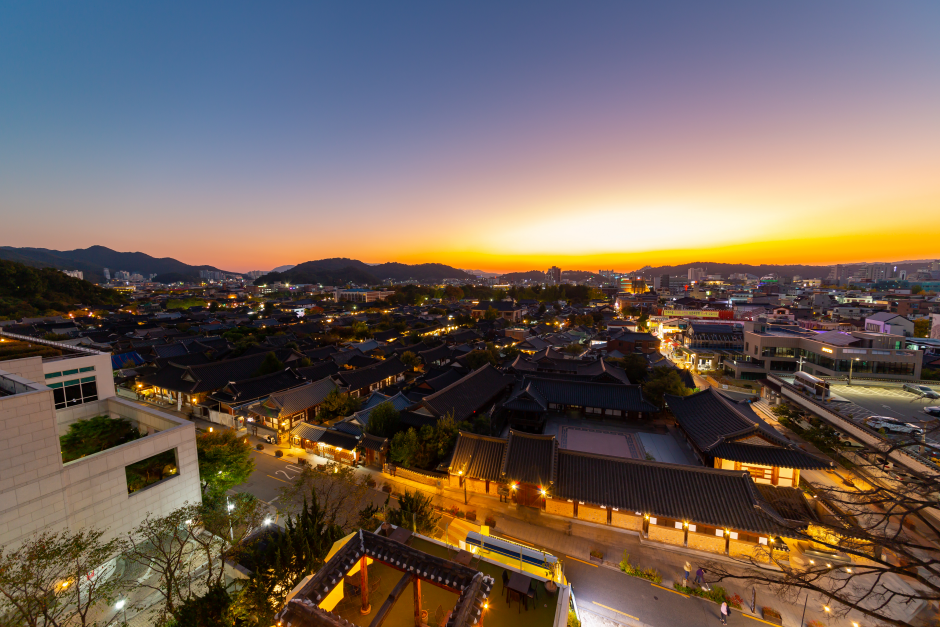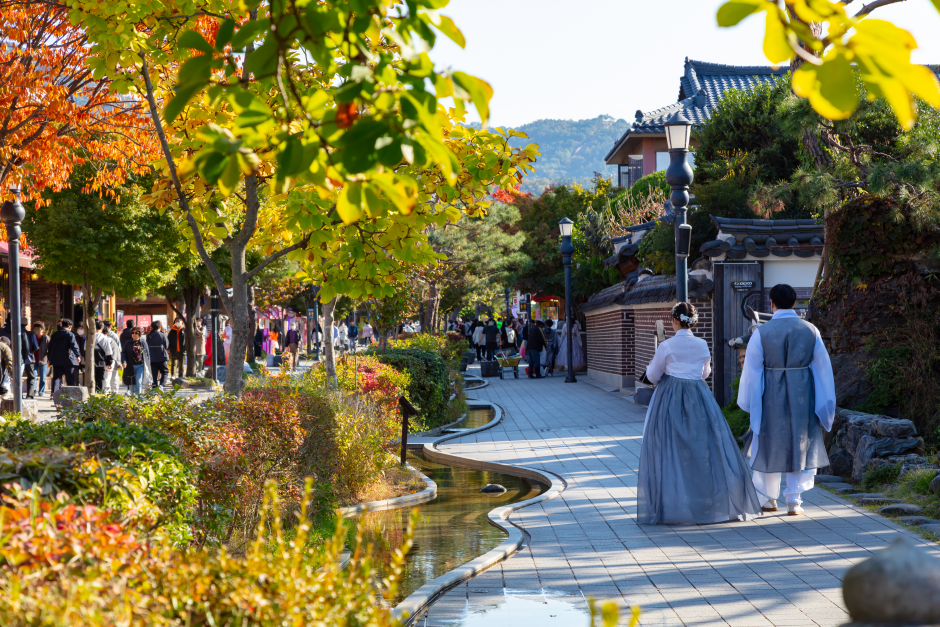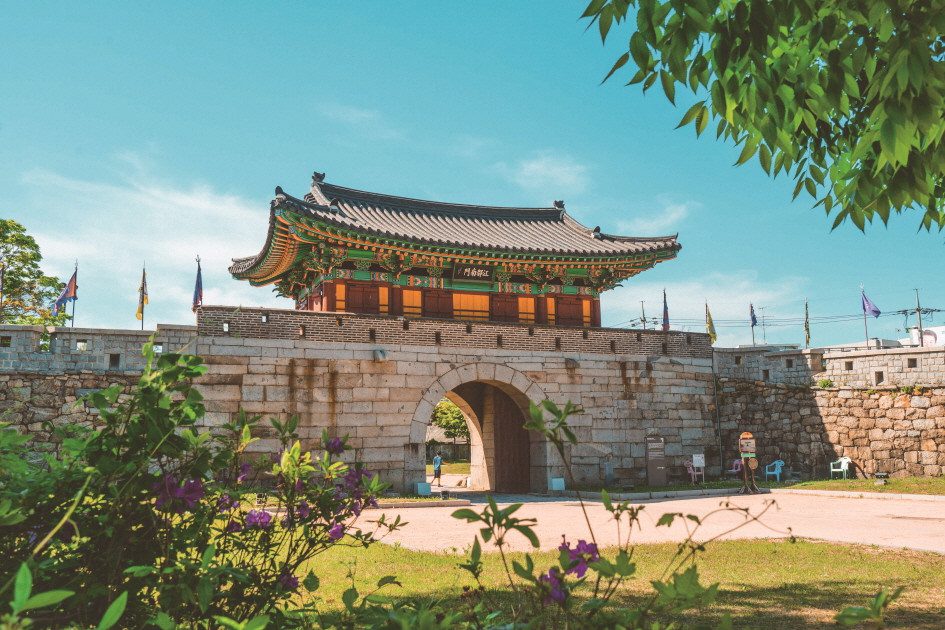One of the most captivating things about South Korea is its seamless mix of history and modernity. It is a country that boasts a plethora of historical heritage sites such as palaces, temples, and villages. In fact, 14 of these sites are on the UNESCO World Heritage list.
Whether you are a fan of history or just looking for something a little different to explore, the following heritage sites are a must-see on your next visit!
Yeongneung



Yeongneung is the burial site of Korea’s most famous monarch, King Sejong the Great, and his wife, Queen Soheon.
The modest complex is surrounded by a tranquil landscape and is a testimony to the legacy of the great king. The traditional burial mound can only be seen from the bottom of the hill, but it is an awe-inspiring view nonetheless. As the creator of Hangul (the written Korean language), King Sejong is famous for his inquisitive and creative nature.
An exhibition of objects invented during his reign, such as a sundial and a water clock, is located within the area. Meanwhile, a small museum located near the entrance of the complex contains artifacts relating to King Sejong’s greatest achievements. Yeongneung is one of 40 Joseon tombs that have been on the UNESCO World Heritage List since 2009.
Address: San 83, Wangdae-ri, Neungseo-myeon, Yeoju-si, Gyeonggi-do, 469-812 South Korea
Gyeongju Historic Area




At 7,100 acres, the Gyeongju Historic Area is known as one of the largest outdoor museums in the world.
There are a huge variety of things to see here from pagodas and tombs to statues and ponds. One of the most famous spots is Cheomseongdae, Asia’s oldest astronomical observatory. The picturesque Anapji Pond can also be seen here and is well worth seeking out.
The Gyeongju Historic Area also contains outstanding examples of Korean Buddhist art. It is quite easy to spend a whole day here, and it is popular with locals and tourists alike. The site includes structures and artifacts left by the Silla Kingdom, and it was added to the UNESCO list in 2000.
Address: 162-27, Noseo-dong, Gyeongju, Gyeongsangbuk-do, 780-932 South Korea
Sosu Seowon



Sosu Seowon is one of nine seowon (private education institutions) added to the UNESCO World Heritage List in 2019. It was founded by Ju Sebong in 1542 to become the first and richest private academy, receiving many large donations of land and grain. The king himself also donated books to the institution.
The layout is unique compared to later academies as it was previously a Buddhist Temple. However, during the Joseon period, many temples were closed and renovated for other uses. As Sosu Seowon is very well preserved and retains most of its original structures, it has been designated as the National Treasure of South Korea Number 55.
Address: 2740 Sobaek-ro, Sunheung-myeon, Yeongju, Gyeongsangbuk-do, 36013 South Korea
Jeonju Hanok Village


This is a great place to visit if you want to witness what a traditional village looks like. Jeonju Hanok Village contains 735 traditional Korean houses and has retained all of its historical appeal, despite the rest of Jeonju becoming more industrialized around it.
Hanok Life Experience Hall is a hanok where visitors can experience traditional Korean life. They can also get a first-hand experience of an ondol, the famous Korean under-floor heating system— perfect for visits during the winter!
Kimchi lovers will enjoy a visit to the Jeonju Kimchi Cultural Centre where visitors can learn the history of this world-famous side dish and eat it too! While at the village, visitors can sample the many traditional meals on offer, including the Jeonju region’s most well-known dish: bibimbap.
Address: 29, Eojin-gil, Wansan-gu, Jeonju-si, Jeollabuk-do, South Korea
Naksansa Temple




Located north of Naksan Beach and overlooking the East Sea, Naksana Temple has an impressive history of 1,300 years. It was built during the Silla period by Ui-Sang, a Buddhist monk and the ambassador of the king.
Among the attractions within the temple complex, visitors can find the National Treasure of South Korea Number 499, Naksansa Chilcheung Seoktap. This seven-storied stone pagoda was built in 1467 and is said to contain a Buddhist Rosary and a magic bead. It is at Naksana Temple that visitors can also view Haesugwaneumsang.
A beautiful 58-foot-high white granite statue known as the Goddess Gwanseum-Bosal stands atop the hill in peaceful meditation as it gazes out to sea. Dedicated in 1977, Haesugwaneumsang is the largest Buddhist statue of its kind in the Orient.
Address: 100, Naksansa-ro, Yangyang-gun, Gangwon-do, 215-853 South Korea
Jongmyo Shrine




Jongmyo Shrine is located in Seoul and is adjacent to two royal palaces: Changdeokgung and Changgyeonggung. This royal shrine is dedicated to the deceased monarchs of the Joseon Dynasty and their enshrined ancestral tablets are the most precious objects housed in Jongmyo.
Jeongjeon is the main hall of the shrine. It was built in 1395 and housed the first set of ancestral tablets kept there. Since then, it has been expanded and now has 19 spirit chambers holding 49 ancestral tablets of past kings.
Yeongnyeongjeon is a secondary hall that can also be seen within the complex. The spirit chambers of both halls are sealed and can only be seen from the outside, but it is still an impressive view. The memorial service Jongmyo Jaerye is the oldest complete ceremony in the world. For the musical part of the ceremony, Jongmyo Jaeryeak uses music and dance that originated 600 years ago.
Active use of the shrine and Jongmyo Jaerye ended in 1901 with the Japanese occupation. However, the ceremony is now conducted annually on the first Sunday of May. Jongmyo Shrine was added to the UNESCO World Heritage List in 1995. In 2001, UNESCO declared Jongmyo Jaerye and Jongmyo Jaeryeak to be South Korea’s first Masterpieces of the Oral and Intangible Heritage of Humanity.
Address: 157, Jong-ro, Jongno-gu, Seoul, South Korea


These are just a few of the wonderful heritage sites that can be visited in South Korea. Have you visited any of the places on our list? Do you have any suggestions that you would add? Let us know your thoughts by tweeting to us @whatthekpop1 or leaving us a comment on Facebook and Instagram!
Katie Moran is an avid fan of Korean History and Culture, from the music to the fashion and, of course, the food! A historian by trade, she enjoys all aspects of ancient Korean History and has a particular interest in the Joseon Dynasty. Sageuk is her favorite genre of drama but she also enjoys rom-com or horror, particularly if they involve any of her favorite actors!
Media: VISITKOREA (Korea Tourism Organization)
Featured Image: Ganghwa Old Town Story Walk

